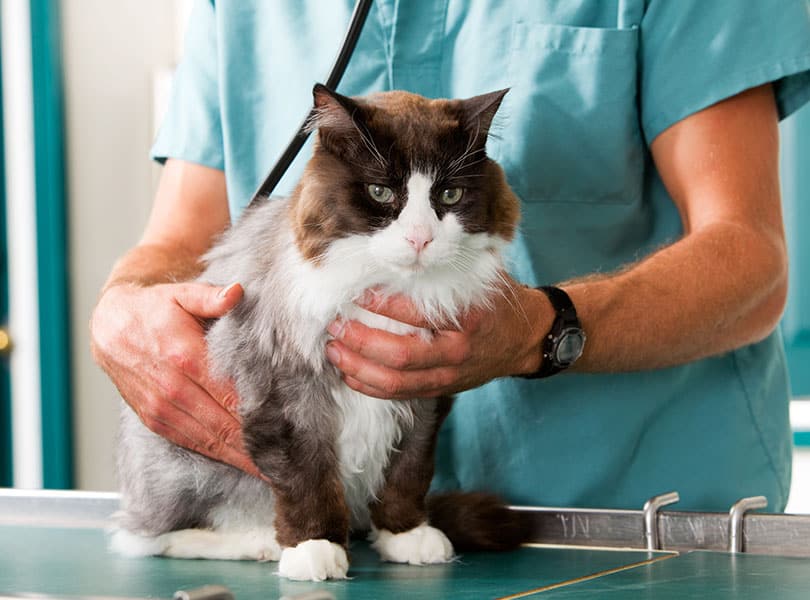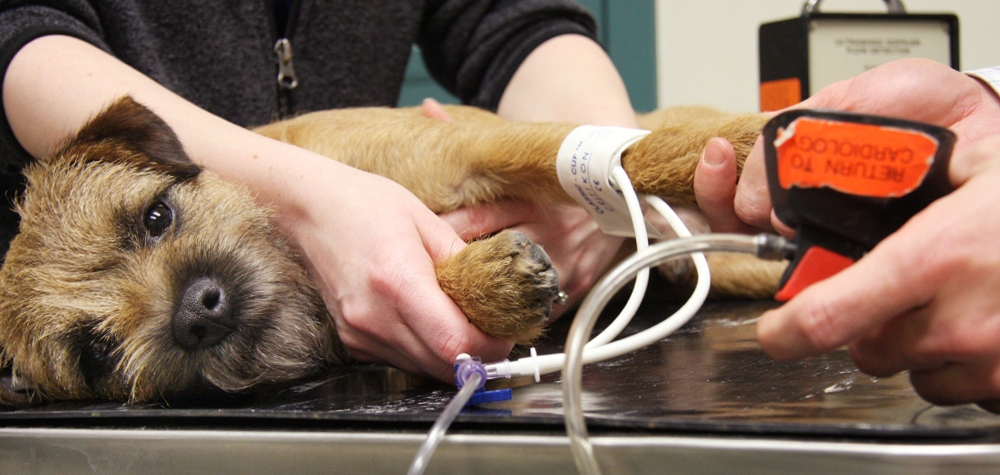What You Required to Learn About Veterinary Solutions: A Summary of Diagnostic Devices and Procedures
Veterinary services play an essential role in preserving the health and wellness of family pets. Regular check-ups can reveal hidden health worries early on. Numerous analysis tools and procedures, such as blood examinations and imaging techniques, supply essential insights right into an animal's wellness. Comprehending these approaches is crucial for family pet owners. What particular analysis procedures are most typically used, and how can they influence an animal's treatment strategy?
Value of Regular Vet Check-Ups
While many animal proprietors may underestimate the value of regular veterinary examinations, these consultations are essential for keeping an animal's general wellness. Regular sees to the vet enable very early discovery of prospective health and wellness concerns before they escalate into major issues. Routine exams often consist of vaccinations, which are very important for stopping contagious diseases that could significantly affect a pet's well-being. Additionally, these appointments offer an opportunity for veterinarians to evaluate the animal's weight, dental wellness, and total problem, making certain that the pet dog is growing. Throughout these brows through, pet dog owners can likewise get important recommendations on diet plan, exercise, and precautionary care tailored to their details pet dog's demands.
Usual Analysis Procedures in Veterinary Medicine
In vet medicine, accurate medical diagnosis is important for effective therapy. Typical diagnostic treatments consist of blood testing techniques, progressed imaging innovations, and urinalysis, each playing a considerable role in recognizing health and wellness problems. Understanding these approaches improves the ability to give ideal look after animal people.
Blood Checking Techniques
Blood testing techniques work as vital diagnostic devices in veterinary medication, enabling vets to evaluate the wellness of animals properly. These techniques entail collecting blood examples to analyze numerous elements, such as white and red blood cells, platelets, and biochemical markers. Usual tests consist of complete blood matters (CBC), which evaluate general wellness and detect infections, and biochemical panels, which examine organ feature and metabolic condition. In addition, serological tests can recognize specific illness via antibody detection. Blood screening is minimally intrusive and gives vital details that helps in detecting conditions, checking health condition, and reviewing responses to treatments. Generally, these strategies play an essential function in ensuring optimal look after pets and livestock alike.
Imaging Technologies Utilized
Analysis imaging modern technologies are essential tools in veterinary medicine, matching blood testing methods by giving aesthetic insights into an animal's interior frameworks. Usual imaging methods consist of X-rays, which serve for evaluating bone fractures and discovering foreign items, and ultrasound, which enables real-time visualization of soft tissues and organs. Magnetic resonance imaging (MRI) provides comprehensive pictures of complicated anatomical areas, particularly in neurological evaluations. Computed tomography (CT) offers cross-sectional images, enhancing diagnostic precision for numerous problems. Each of these innovations aids veterinarians in diagnosing illnesses, intending therapies, and monitoring recuperation. By including imaging innovations, veterinary professionals can much better analyze a pet's wellness and make informed choices concerning their treatment.
Urinalysis and Diagnostics
Urinalysis offers as an important diagnostic tool in vet medicine, offering important insights right into a pet's general health and aiding in the discovery of different conditions. This non-invasive treatment examines pee samples to analyze kidney feature, hydration standing, and metabolic problems. Common parts taken a look at include details gravity, pH degrees, sugar, healthy proteins, and the existence of blood or bacteria. Irregular findings can show issues such as urinary system tract infections, diabetic issues mellitus, or kidney illness. To enhance analysis accuracy, urinalysis is usually done in conjunction with various other tests, such as blood job and imaging studies. Early discovery via urinalysis can cause prompt interventions, boosting the diagnosis for numerous vet patients. Consequently, it is a vital aspect of extensive vet care.
Recognizing Blood Examinations and Research Laboratory Evaluation
Understanding blood tests and laboratory analysis is vital in vet medication as it aids in diagnosing various wellness problems in pets. Different sorts of blood tests give necessary details about a pet's inner state, while translating lab results needs mindful consideration of various elements. This area will check out the kinds of blood tests readily available and the value of their outcomes.
Types of Blood Tests
Blood tests play an essential function in vet medication, providing vital insights right into a pet's wellness standing. Different sorts of blood tests are used, each offering different purposes. Full blood matters (CBC) analyze total health and discover conditions such as anemia or infection. Biochemical profiles review body organ feature by measuring enzymes and electrolytes, providing understandings right into metabolic wellness. Serological tests identify specific antibodies or virus, helping in the medical diagnosis of infections or autoimmune diseases. Blood inputting warranties safe transfusions, while coagulation examinations evaluate the blood's capacity to clot, vital for surgeries. These examinations collectively boost medical diagnosis, treatment planning, and surveillance of an animal's wellness, highlighting the importance of comprehensive laboratory analysis in vet care.

Translating Laboratory Outcomes
A comprehensive analysis of lab results is important for exact diagnosis and therapy in vet medication. Translating laboratory results calls for an understanding of typical recommendation ranges and the significance of deviations. Blood tests can disclose various wellness signs, such as organ feature, electrolyte equilibrium, and the existence of infections. Vets must consider the entire medical photo, including the animal's history, physical exam findings, and any kind of signs and symptoms offered. Variants in outcomes might develop from aspects such as age, breed, and underlying health and wellness conditions. Consequently, lab results ought to not be checked out alone yet instead as component of a comprehensive diagnostic approach. Precise analysis enables for tailored treatment plans and better outcomes for veterinary patients.
Imaging Techniques: X-rays, Ultrasounds, and Beyond
Imaging techniques are necessary devices in vet medicine, offering essential understandings into the wellness and wellness of pets. Among one of the most generally utilized techniques are X-rays and ultrasounds. X-rays are important for envisioning bone frameworks, helping vets determine cracks, lumps, or foreign look at this now items. This method is non-invasive and quick, making it suitable for urgent situations.Ultrasounds, on the various other hand, utilize audio waves to create pictures of soft cells and organs. This strategy is especially valuable for taking a look at the heart, abdomen, and reproductive body organs, enabling veterinarians to analyze conditions like liquid accumulation or organ abnormalities.Beyond X-rays and ultrasounds, progressed imaging methods such as computed tomography (CT) and magnetic resonance imaging (MRI) are significantly used in veterinary method. These methods supply in-depth cross-sectional images, enhancing the precision of diagnoses and therapy plans. Ultrasound For Dogs. Generally, imaging methods play a necessary duty in guaranteeing reliable vet treatment
The Duty of Biopsies in Diagnosing Animal Wellness Issues
Precision in diagnosing health problems in animals usually rests on the usage of biopsies, which provide conclusive details about tissue problems. A biopsy involves the removal of a tiny sample of tissue for examination under a microscope, enabling vets to recognize various problems, consisting of infections, tumors, and inflammatory illness. This analysis device is essential for distinguishing between deadly and benign developments, assisting therapy decisions, and assessing the seriousness of a condition.Biopsies can be carried out utilizing various techniques, such as needle goal, incisional biopsies, or excisional biopsies, depending upon the area and kind of cells entailed. The choice of method may affect healing time and the amount of tissue collected. Inevitably, the info amassed from a biopsy can bring about targeted treatments, improving outcomes for pets facing serious health challenges. Veterinarians Our site emphasize the importance of this treatment in accomplishing precise diagnoses and effective treatment plans.
Advanced Diagnostic Devices: Endoscopy and CT Scans

Advanced analysis tools, such as endoscopy and CT scans, play an important role in modern-day veterinary medication, providing non-invasive approaches to imagine interior structures and detect different problems in family pets. Endoscopy involves using a versatile tube geared up with a camera, permitting veterinarians to examine the stomach tract and respiratory system directly. This method can expose abnormalities such as lumps, foreign bodies, or swelling, allowing targeted treatment plans.CT scans, on the various other hand, use innovative imaging innovation to create in-depth cross-sectional photos of the body (CT Scans For Dogs). This approach is specifically useful for assessing complicated frameworks like the mind, spine, and joints. By giving high-resolution images, CT scans assist vets in identifying problems that might not appear through conventional radiography. Together, these sophisticated tools enhance diagnostic accuracy, enhance treatment end results, and ultimately add to better general family pet health monitoring

Interpreting Examination Outcomes: What Animal Owners Should Know
Comprehending examination results can be a difficult job for animal proprietors, especially after innovative procedures like endoscopy and CT scans have actually been executed. Translating these outcomes requires a grasp of clinical terms and a clear understanding of what the findings suggest concerning the animal's wellness. Vets usually offer descriptions, yet the complexity of the outcomes can still lead to confusion.Pet owners must proactively engage in discussions with their vets, asking questions to clear up any kind of uncertainties. It is important to understand unusual versus typical outcomes and the effects for the pet's treatment plan. In addition, recognizing that some results may need additional screening or surveillance can aid proprietors remain informed about their animal's health and wellness journey. Eventually, a collective technique in between pet dog proprietors and vet specialists cultivates far better wellness end results and boosts the total treatment experience for family pets.
Often Asked Concerns
Exactly how Do I Select the Right Veterinary Clinic for My Pet?
Choosing the right vet facility entails looking into regional alternatives, examining credentials, checking out facilities, and evaluating team communications (Cancer Veterinary Near Me). Prioritizing suggestions from trusted resources can help guarantee the most effective treatment and setting for a family pet's health and wellness requirements
What Should I Do if My Family Pet Declines to visit the Vet?
When a pet refuses to go to the vet, it's suggested to stay tranquil, use treats or playthings to entice them, and take into consideration setting up a home check out if stress and anxiety lingers. Persistence and positive reinforcement are key.
Exist Telehealth Options for Vet Providers?
Telehealth alternatives for vet solutions are significantly readily available, permitting pet dog proprietors to consult with veterinarians remotely. These solutions make it possible for conversations concerning health and wellness worries, recommendations on small conditions, and follow-ups without needing to go to a center.
How Commonly Should My Pet Dog Have Dental Check-Ups?
The frequency of dental exams for pet dogs commonly relies on their age and breed. Typically, veterinarians suggest yearly oral analyses, although some pets may require more regular visits to keep suitable dental wellness.

What Are the Prices Linked With Veterinary Diagnostics?
The expenses connected with vet diagnostics can differ widely, usually varying from standard examinations like blood job to advanced imaging techniques. Aspects influencing costs include the center's place, devices made use of, and details examinations needed for each and every pet. Veterinary solutions play a crucial role in maintaining the health and wellness of pets. While lots of family pet proprietors may undervalue the value of routine veterinary check-ups, these appointments are vital the original source for keeping a pet's general health and wellness. Furthermore, these appointments provide an opportunity for vets to analyze the animal's weight, oral health and wellness, and general condition, making sure that the pet dog is prospering. Precision in detecting health issues in pet dogs usually pivots on the use of biopsies, which provide clear-cut info regarding tissue problems. In addition, identifying that some results may need additional testing or monitoring can aid proprietors remain educated regarding their animal's health and wellness trip.